Dakota Pipeline protests explained in pictures
- Published
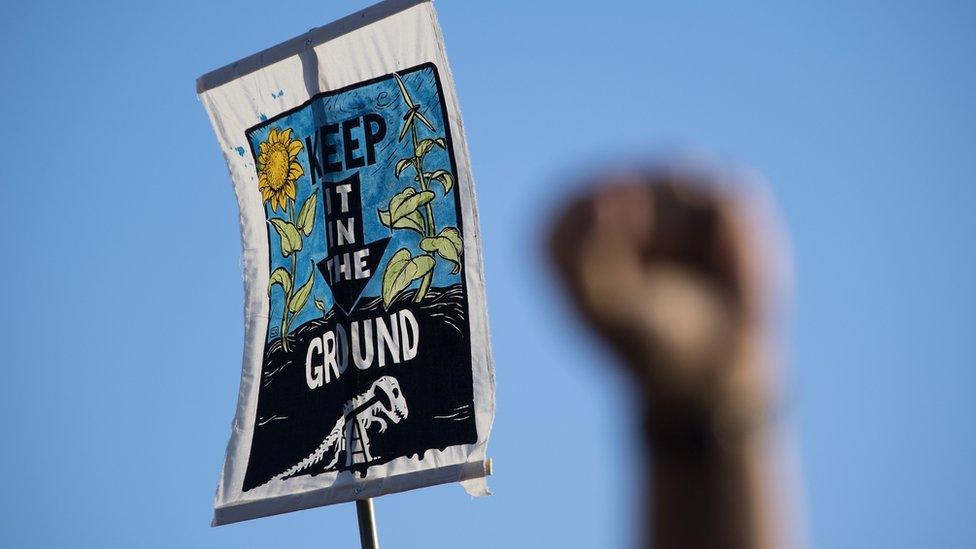
It's going to be 1,200 miles (1,900km) long, cost $3.7bn (£2.8bn) and move 470,000 barrels of crude oil a day.
So, while the phrase Dakota Access Pipeline might not sound that exciting, it's a pretty big deal.
It's not just the numbers that are huge either; the last few months have seen big debates and protests about where exactly the pipe should be laid.
To help you get up to speed, here's the story of the demonstrations using some of the best photographs around.
The route of the pipeline
Plans to develop the pipeline began in 2014.
It begins in the Bakken oil fields of North Dakota and is set to end at the oil tank farm near Patoka, Illinois.
Energy Transfer Partners, the company behind the development, say it will connect the two rapidly expanding production areas.
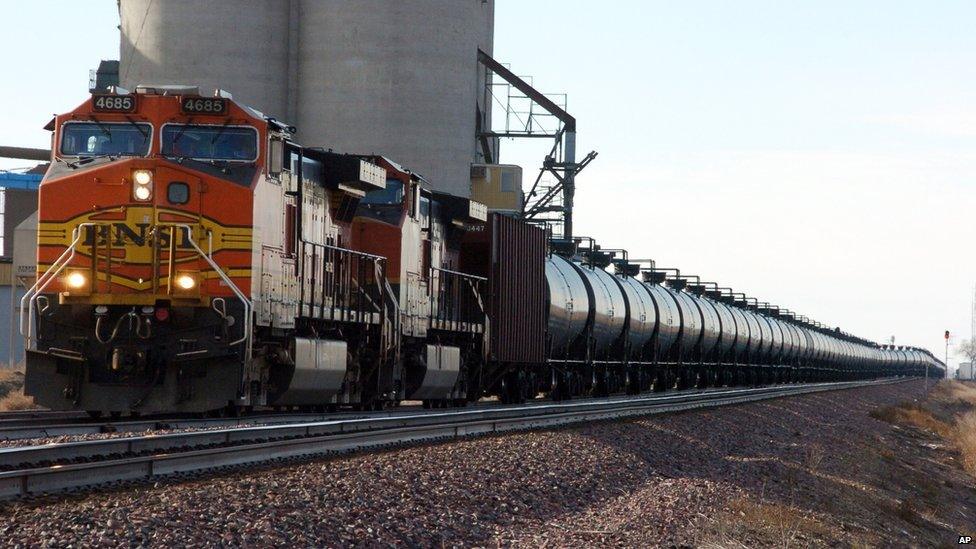
Who are the protesters?
#NoDAPL #NotMyPipeline #WaterIsLife.
These are just some of the hashtags you can expect to find if you search for the Dakota Access Pipeline on social media.
The protests started with the Sioux Native American, external people of Standing Rock Indian reservation in South Dakota.
The pipeline passes about a half-mile from their reservation. They fear it will displace sacred artefacts and pollute the water supply for surrounding communities.
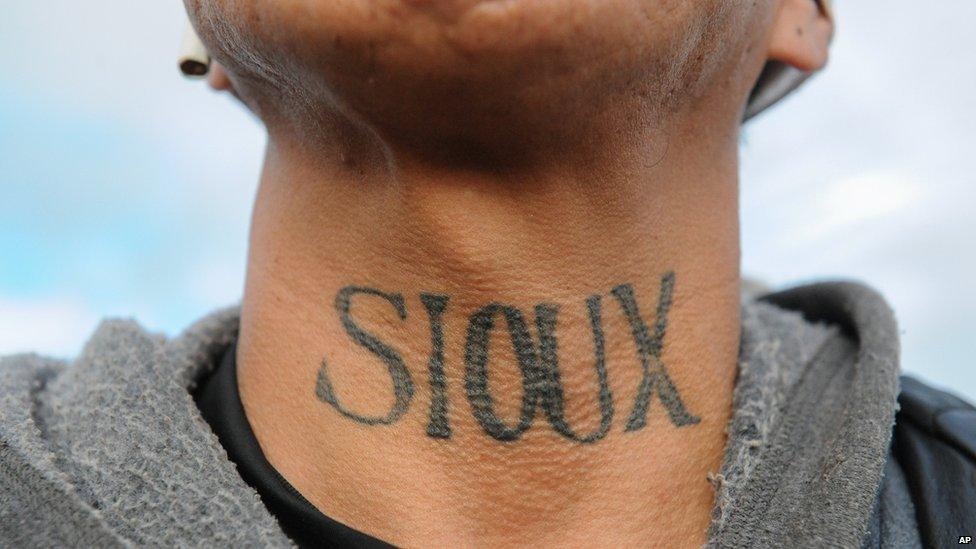
"The Dakota Access threatens everything from farming and drinking water to entire ecosystems, wildlife and food sources," they say.

Environmental activists have backed the group in recent months, by supporting the cause along with other Native American tribes who want to show solidarity with the Sioux.
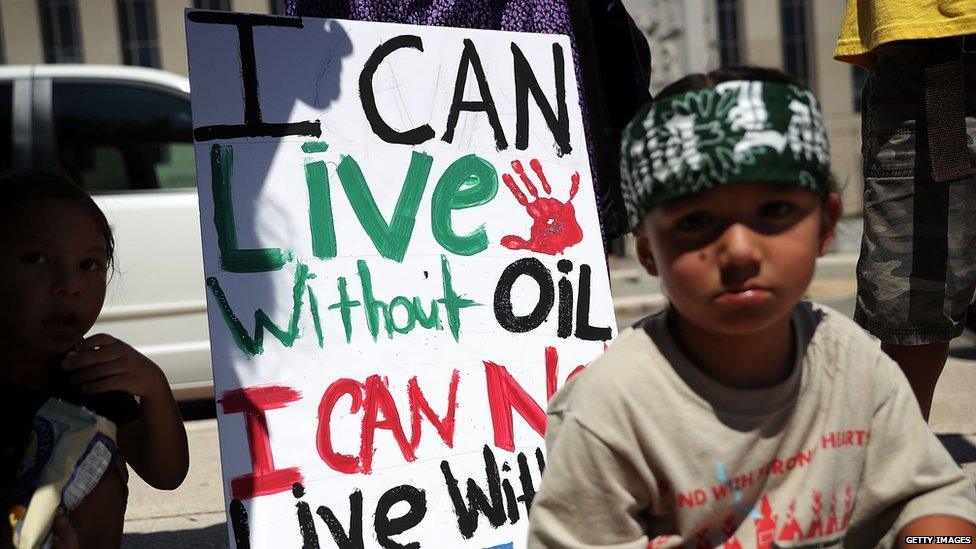
Reports suggest that the pipeline is 87% complete and as tensions amongst the Sioux and the local authorities grow the protests have become increasingly violent.
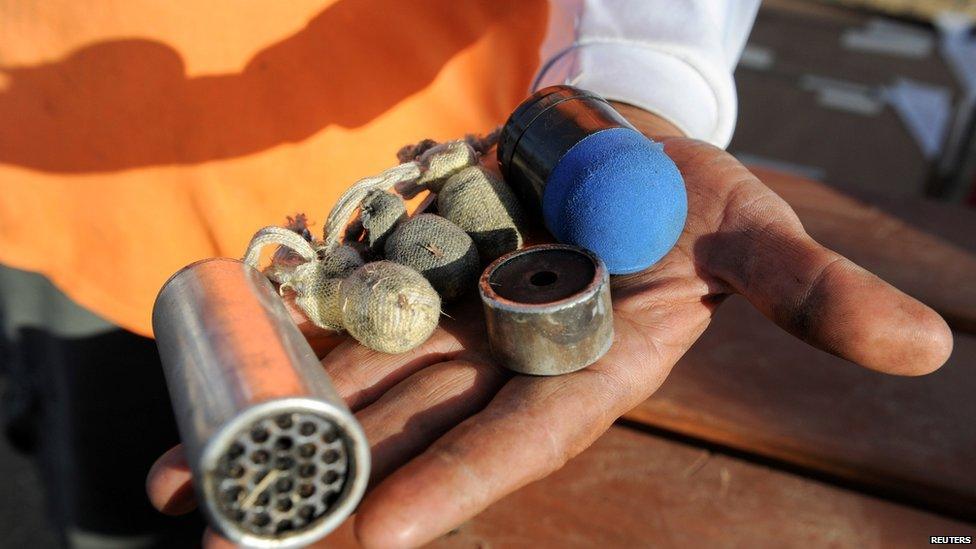

Police use a water cannon to put out a fire started by protesters
Politics and the pipeline
The pipeline stands to benefit oil companies, shareholders and local governments.
Dakota Access says the project will create up to 12,000 jobs and will generate $55m (£44m) in annual property taxes.
But protesters have urged President Obama to call for the pipeline's route to be changed.
Bernie Sanders, who ran against Hilary Clinton for the Democratic presidential nomination, has spoken openly against the developments.
Earlier this month he stood with crowds at the White House, external urging Barack Obama to reconsider these plans.
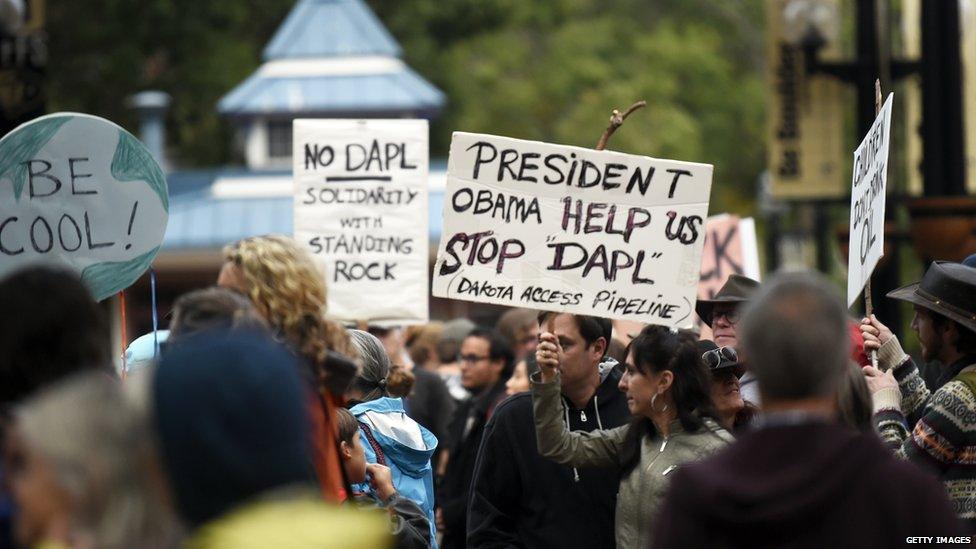
"It is time for a new approach to the Native American people, not to run a pipeline through their land," he said.
"And we are demanding that sovereign rights of the Native American people be honoured and respected."
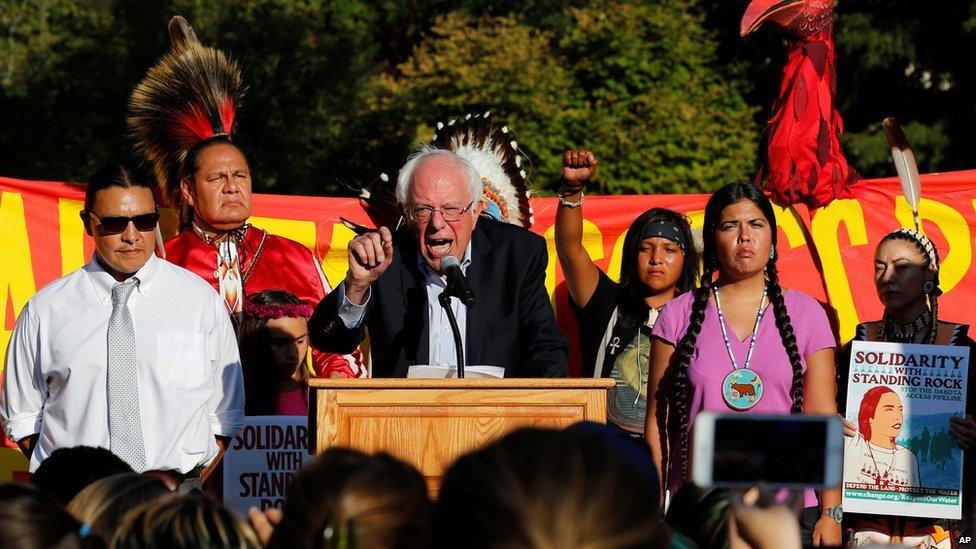
In his campaign Donald Trump was an advocate for fossil fuels - so hope that he would reroute the expansion didn't look promising.
It's since been reported that he holds shares, external in Energy Transfer Partners, the company working on the partially built pipeline.

Celebrity involvement
It seems like the Justice League cast are fighting climate change as well as crime.
They released a video showing that they stand against the Dakota Access Pipeline.
The cast shared a video on YouTube in support the Rezpect our water campaign. , external
Warning: the following video may contain third party ads.
The pipeline was expected to be fully functional by the end of 2016 - but with opinions still greatly divided and time running out that looks unlikely.
Find us on Instagram at BBCNewsbeat, external and follow us on Snapchat, search for bbc_newsbeat